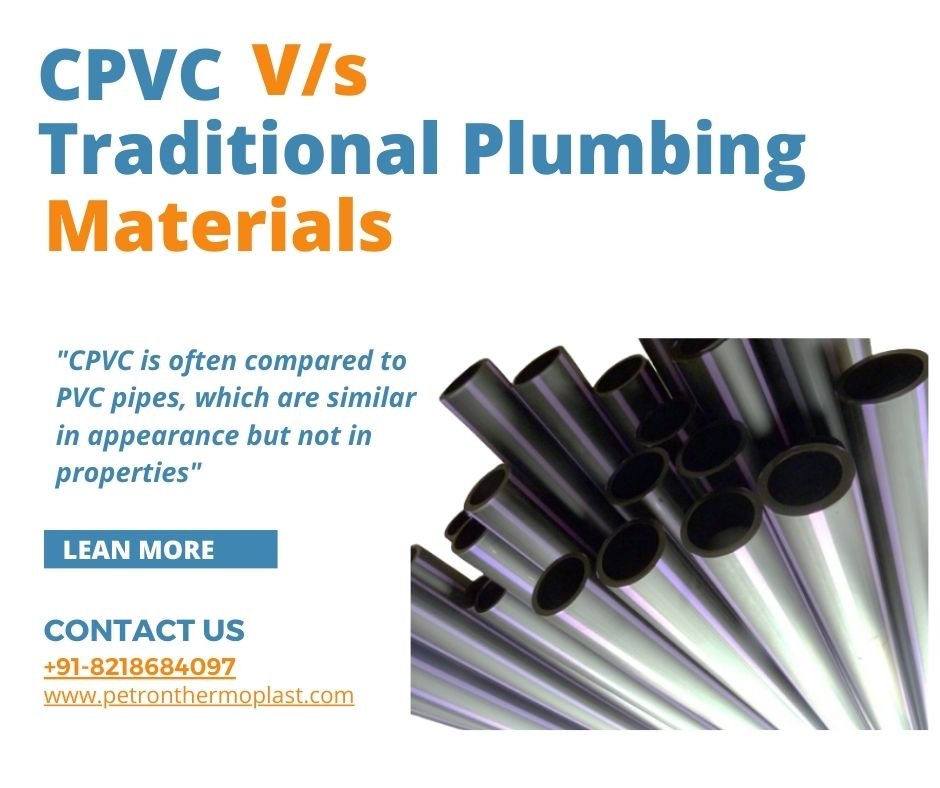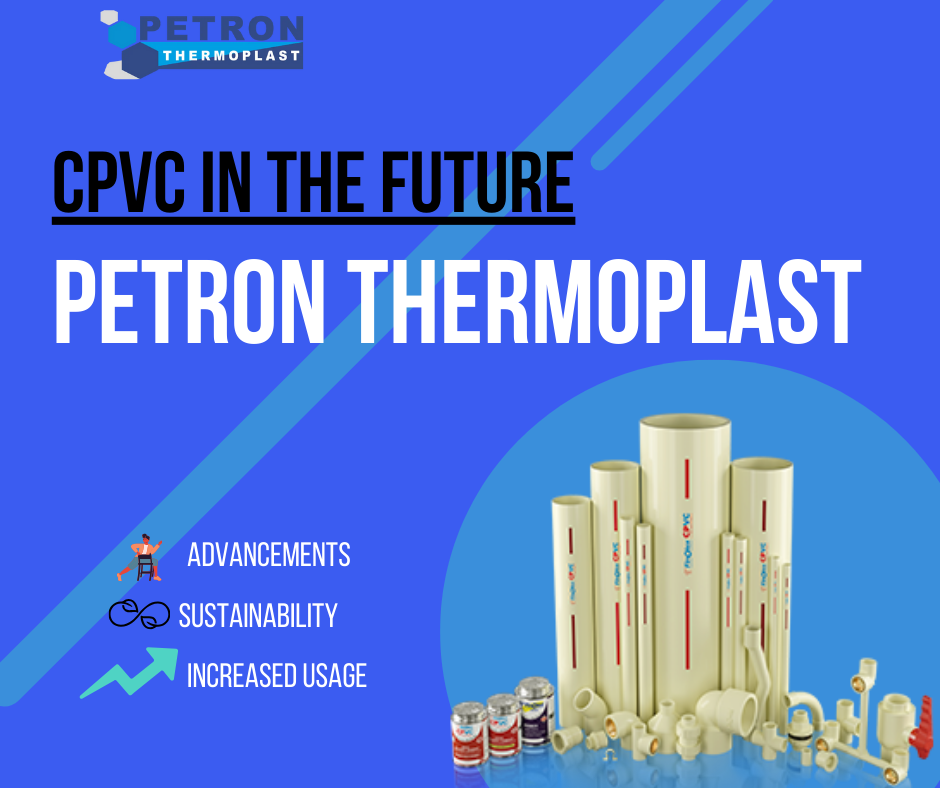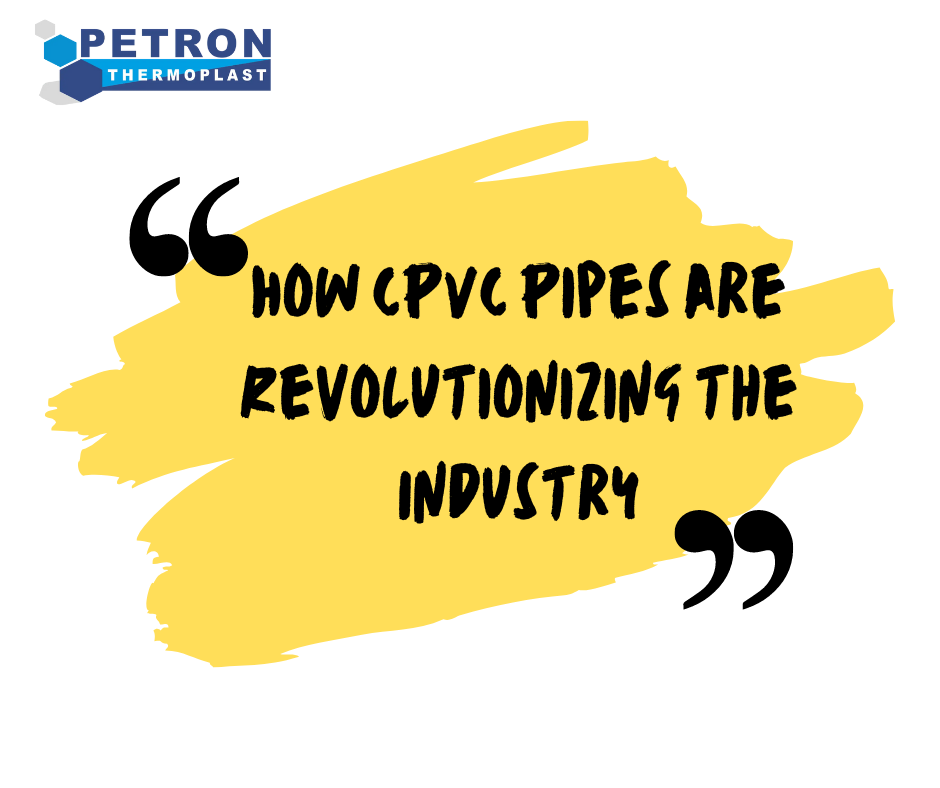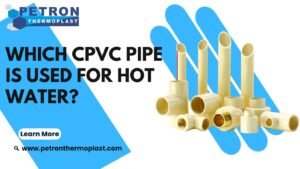Table of Contents
ToggleHow CPVC Pipes are Revolutionizing the Industry
CPVC (Chlorinated Polyvinyl Chloride) pipes have taken the plumbing industry by storm, ushering in a new era of innovation and efficiency. This versatile material has rapidly become the preferred choice for plumbing systems in both residential and commercial settings. In this comprehensive article, we will delve into the world of CPVC pipes and explore how they are transforming the industry. From their unique properties to their numerous advantages, this article will cover it all.
Introduction
The plumbing industry has undergone a significant transformation over the years, with CPVC pipes emerging as a game-changer. These pipes are a type of thermoplastic that offers several advantages over traditional plumbing materials. From residential applications to large-scale industrial use, CPVC pipes have been steadily gaining ground. In this article, we will explore the properties and benefits of CPVC pipes and how they are revolutionizing the industry.
Understanding CPVC Pipes
What is CPVC?
CPVC, or Chlorinated Polyvinyl Chloride, is a specialized thermoplastic that is known for its exceptional durability and chemical resistance. It is a derivative of PVC and is specially treated with chlorine to enhance its performance. CPVC pipes are manufactured to meet specific standards and are approved for use in potable water systems.
The History of CPVC
The development of CPVC pipes dates back to the 1950s, and they were introduced as a safer alternative to traditional metal pipes. Over the years, CPVC has evolved and gained widespread acceptance due to its remarkable properties.
The Benefits of CPVC Pipes
Corrosion Resistance
One of the primary advantages of CPVC pipes is their resistance to corrosion. Unlike metal pipes, CPVC does not rust or corrode, ensuring the longevity of plumbing systems.
Easy Installation
CPVC pipes are lightweight and easy to work with, making installation a breeze. Their ability to be easily cut and joined reduces labor costs and installation time.
Cost-Effectiveness
CPVC pipes are cost-effective, not only in terms of material cost but also due to the reduced installation and maintenance expenses. This makes them an attractive option for various projects.
Applications of CPVC Pipes
Residential Plumbing
CPVC pipes are widely used in residential plumbing systems. They are chosen for their durability, ease of installation, and resistance to scale buildup, making them a top choice for homes.
Commercial and Industrial Use
In commercial and industrial settings, CPVC pipes are preferred for their ability to handle high temperatures and pressures. They are commonly used in chemical processing plants and large-scale industrial applications.
CPVC vs. Traditional Plumbing Materials

PVC Pipes
CPVC is often compared to PVC pipes, which are similar in appearance but not in properties. While PVC is suitable for drainage and non-potable water systems, CPVC is designed for potable water distribution.
Copper Pipes
Copper pipes have been a staple in plumbing for decades, but CPVC is gaining ground due to its cost-effectiveness and corrosion resistance.
Sustainability and CPVC
Sustainability is a critical concern in today’s world, and CPVC pipes align well with the goals of environmental responsibility. When it comes to plumbing materials, CPVC is recognized for its eco-friendly attributes. Here, we explore the sustainability aspects of CPVC.
CPVC is a sustainable choice due to several key factors:
1. Recyclability
CPVC pipes can be recycled, reducing the environmental impact of plumbing projects. When these pipes reach the end of their lifespan, they can be processed and used in the production of new CPVC materials. This closed-loop recycling system helps conserve resources and reduce waste.
2. Energy-Efficient Production
The manufacturing process of CPVC pipes is energy-efficient. This means that the production of CPVC materials consumes less energy compared to other materials like metal or concrete. Lower energy consumption results in reduced greenhouse gas emissions, contributing to a greener and more sustainable future.
3. Durability and Longevity
CPVC’s exceptional durability ensures a long service life for plumbing systems. Pipes that last longer need to be replaced less frequently, reducing the environmental impact associated with the production and disposal of plumbing materials.
4. Water Conservation
CPVC pipes are used for water distribution systems. Their smooth interior surface and resistance to scaling mean that less water is wasted due to clogs and blockages. This contributes to water conservation, a critical aspect of sustainability.
CPVC Pipe Installation - A Step-by-Step Guide
Installing CPVC pipes is a straightforward process, but it requires precision and care to ensure a reliable plumbing system. Here’s a step-by-step guide to help you with the installation:
1. Planning
Begin by carefully planning your plumbing system layout. Ensure you have all the necessary components, including pipes, fittings, solvents, and tools.
2. Measuring and Cutting
Measure and mark the CPVC pipes accurately, then use a fine-toothed saw to cut them to the desired length. Ensure the cuts are square for proper connections.
3. Deburring
After cutting, use a deburring tool to remove any rough edges or burrs from the pipe ends. Smooth edges ensure a secure and leak-free joint.
4. Dry Fitting
Before applying solvent, dry-fit the components to check the alignment and fit. Ensure all pipes and fittings are in the correct position.
5. Cleaning
Clean the pipe and fitting ends using a clean, dry cloth. This step is crucial as it removes any dirt or contaminants that may affect the solvent’s effectiveness.
6. Applying Solvent
Apply CPVC solvent cement to both the pipe end and the inside of the fitting. Quickly insert the pipe into the fitting, making a quarter turn to evenly spread the cement.
7. Final Assembly
Hold the joint in place for a few seconds to allow the solvent to bond the materials. Once the joint is secure, it’s ready for use.
CPVC pipe installation is a precise process that ensures leak-free plumbing systems when done correctly.
Common Installation Mistakes
Despite the simplicity of CPVC pipe installation, common mistakes can lead to issues down the road. Here are some pitfalls to avoid:
1. Inadequate Cleaning
Failing to clean the pipe and fittings properly can lead to weak bonds, resulting in leaks. Thoroughly clean surfaces before applying solvent.
2. Incorrect Solvent Application
Using too much or too little solvent can compromise the joint’s integrity. Follow the manufacturer’s recommendations for solvent application.
3. Improper Pipe Cutting
Uneven or angled cuts make it difficult to achieve proper joint connections. Use a fine-toothed saw and ensure square cuts.
4. Over-Tightening
Over-tightening can damage the pipes and fittings, causing stress cracks. Follow manufacturer guidelines for the required torque when making connections.
5. Ignoring Safety Precautions
Safety is crucial when working with solvents. Always follow safety guidelines, such as working in a well-ventilated area and wearing appropriate protective gear.
Avoiding these common installation mistakes will ensure the reliability and longevity of your CPVC plumbing system.
Maintenance of CPVC Plumbing Systems

Maintaining your CPVC plumbing system is essential to ensure its longevity and continued reliability. Here are some key practices for the maintenance of CPVC pipes:
Regular Inspections: Periodically inspect your CPVC plumbing for any visible signs of wear, damage, or leaks. Catching issues early can prevent more significant problems down the line.
Cleaning: Keep the pipes and fittings clean and free from debris. CPVC is resistant to scaling and corrosion, but maintaining a clean system is always a good practice.
Leak Checks: Look out for any signs of leaks, such as water stains, dampness, or water droplets. Address any leaks promptly to prevent water damage.
Avoiding Chemical Damage: CPVC is highly resistant to most chemicals, but avoid using aggressive solvents or chemicals that could potentially weaken or damage the material.
Temperature Monitoring: CPVC is sensitive to temperature, so make sure that your plumbing system is not exposed to extreme heat sources. Avoid any potential sources of overheating to maintain the integrity of the pipes.
Valve and Faucet Maintenance: Regularly check and maintain valves and faucets connected to the CPVC system to ensure they are working correctly.
CPVC Pipes in Cold Climates
CPVC pipes can indeed be used in cold climates, but certain precautions are necessary:
- Insulation: Insulate CPVC pipes to protect them from freezing. This is particularly crucial for pipes that are exposed to extreme cold.
- Heat Tracing: In extremely cold areas, consider using heat tracing cables to prevent freezing. These cables generate heat to keep the pipes warm.
- Bury Deeper: When installing CPVC in cold regions, consider burying the pipes deeper below the frost line to minimize exposure to freezing temperatures.
- Shut Off Outdoor Lines: In the winter, shut off and drain outdoor CPVC lines to prevent freezing and potential damage.
Regulatory Compliance
CPVC pipes must comply with specific regulations and standards to ensure their safety and performance. These regulations include:
- NSF/ANSI Standards: CPVC pipes must meet NSF/ANSI 14 and NSF/ANSI 61 standards to ensure they are safe for use in potable water systems. These standards address both the material’s safety and its impact on drinking water.
- Local Building Codes: CPVC installations must adhere to local building codes, which vary from one location to another. Compliance ensures the safety and legality of your plumbing system.
- Manufacturer Guidelines: Always follow the manufacturer’s installation guidelines, as they provide instructions for proper usage and maintenance.
- Third-Party Certifications: Look for third-party certifications, such as the Water Quality Association’s Gold Seal, which indicates that the product meets industry standards.
CPVC in the Future

The future of CPVC looks promising:
Advancements: Ongoing research and development will likely lead to enhanced CPVC formulations with even greater durability and chemical resistance.
Sustainability: CPVC’s recyclability and energy-efficient production will align well with the growing demand for sustainable construction materials.
Increased Usage: As awareness of CPVC’s advantages continues to grow, its use in plumbing systems is expected to increase across residential, commercial, and industrial applications.
Global Expansion: CPVC’s global adoption is on the rise, making it a truly international plumbing material.
Case Studies
Real-world examples of CPVC pipe applications can showcase its effectiveness:
Residential Plumbing: Case studies can highlight how CPVC provides cost-effective and long-lasting solutions for residential plumbing, reducing maintenance costs and ensuring clean drinking water.
Industrial Applications: Explore how CPVC is being used in chemical processing plants and other industrial settings to handle high temperatures and corrosive materials effectively.
Commercial Projects: Highlight successful commercial projects that have benefited from the versatility and reliability of CPVC plumbing systems.
Sustainability Showcase: Show how CPVC pipes have contributed to more sustainable construction and water management practices in various regions.
These case studies demonstrate the real-world advantages of CPVC pipes in diverse settings, offering valuable insights for those considering their use in future projects.
FAQs
Are CPVC pipes safe for drinking water?
Yes, CPVC pipes are safe for carrying drinking water as they are corrosion-resistant and do not leach harmful substances into the water.
How long do CPVC pipes last?
When installed and maintained correctly, CPVC pipes can last for 50 years or more.
Can I use CPVC pipes for natural gas lines?
No, CPVC pipes are not suitable for natural gas lines. You should use materials approved for gas installations.
What is the cost difference between CPVC and copper pipes?
CPVC pipes are generally more cost-effective than copper pipes, making them a popular choice for budget-conscious projects.
Are there any limitations to using CPVC pipes?
CPVC pipes should not be exposed to direct sunlight for extended periods, and they are not suitable for extremely high-temperature.
Follow Us On : Facebook, LinkedIn
You May Also Like:
CPVC Pipe Manufacturers
CPVC Pipe Manufacturers India


